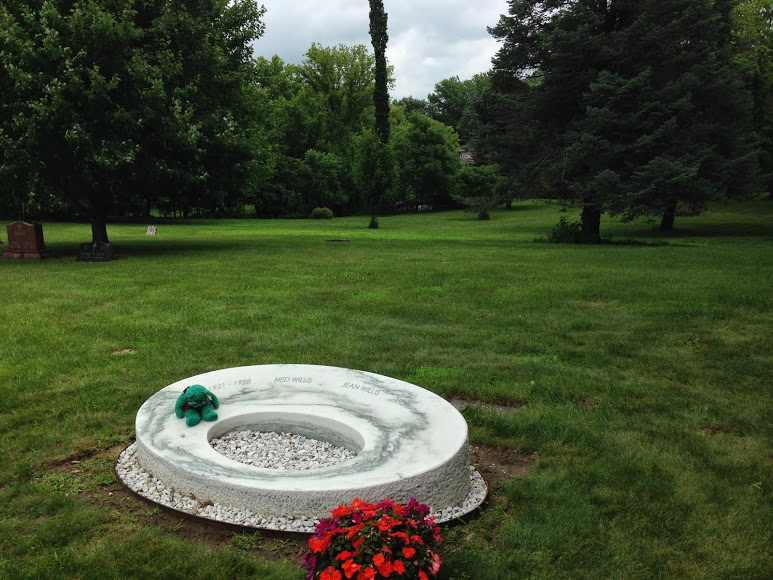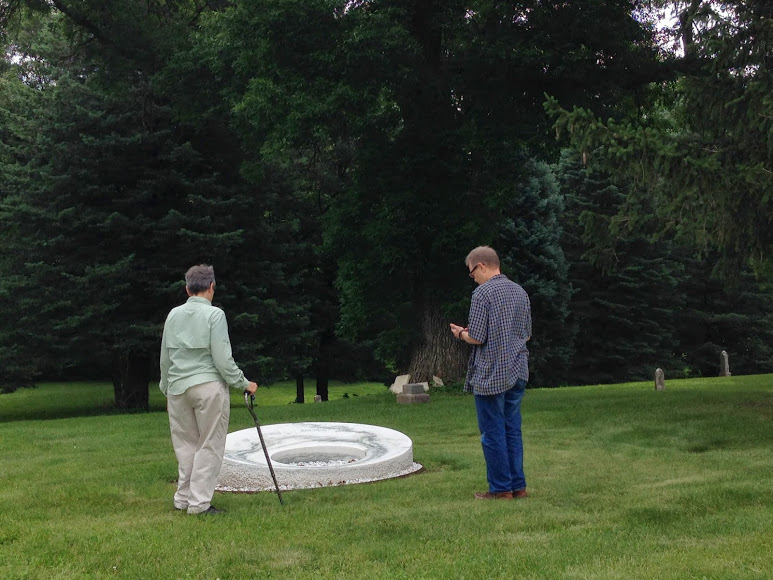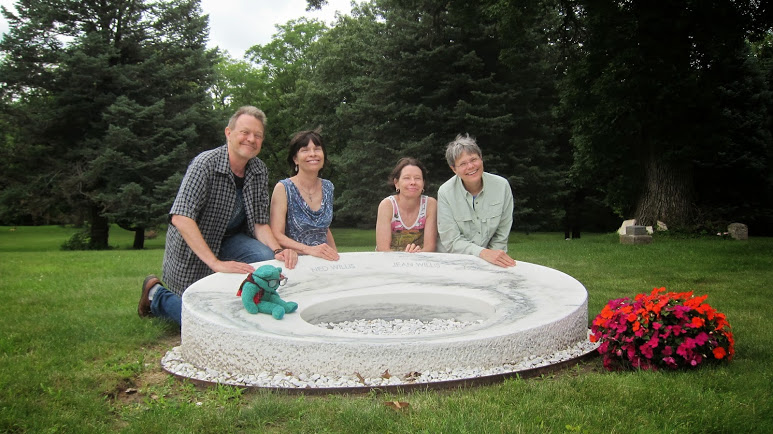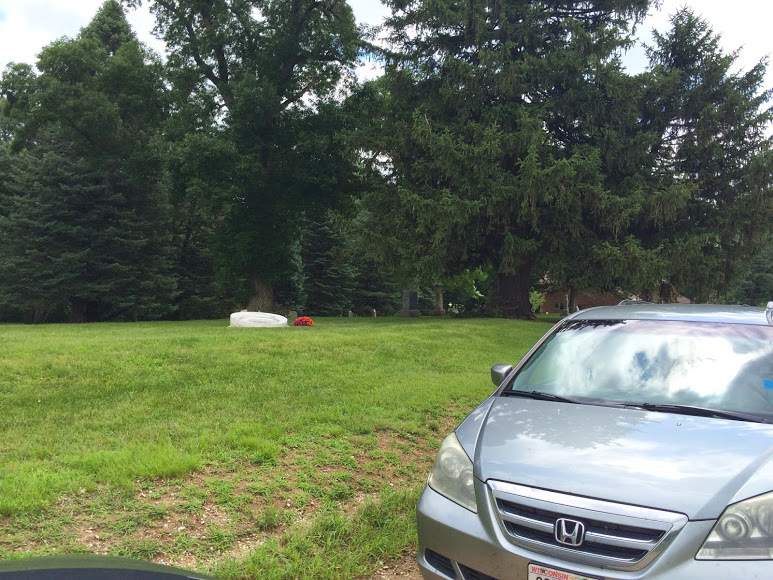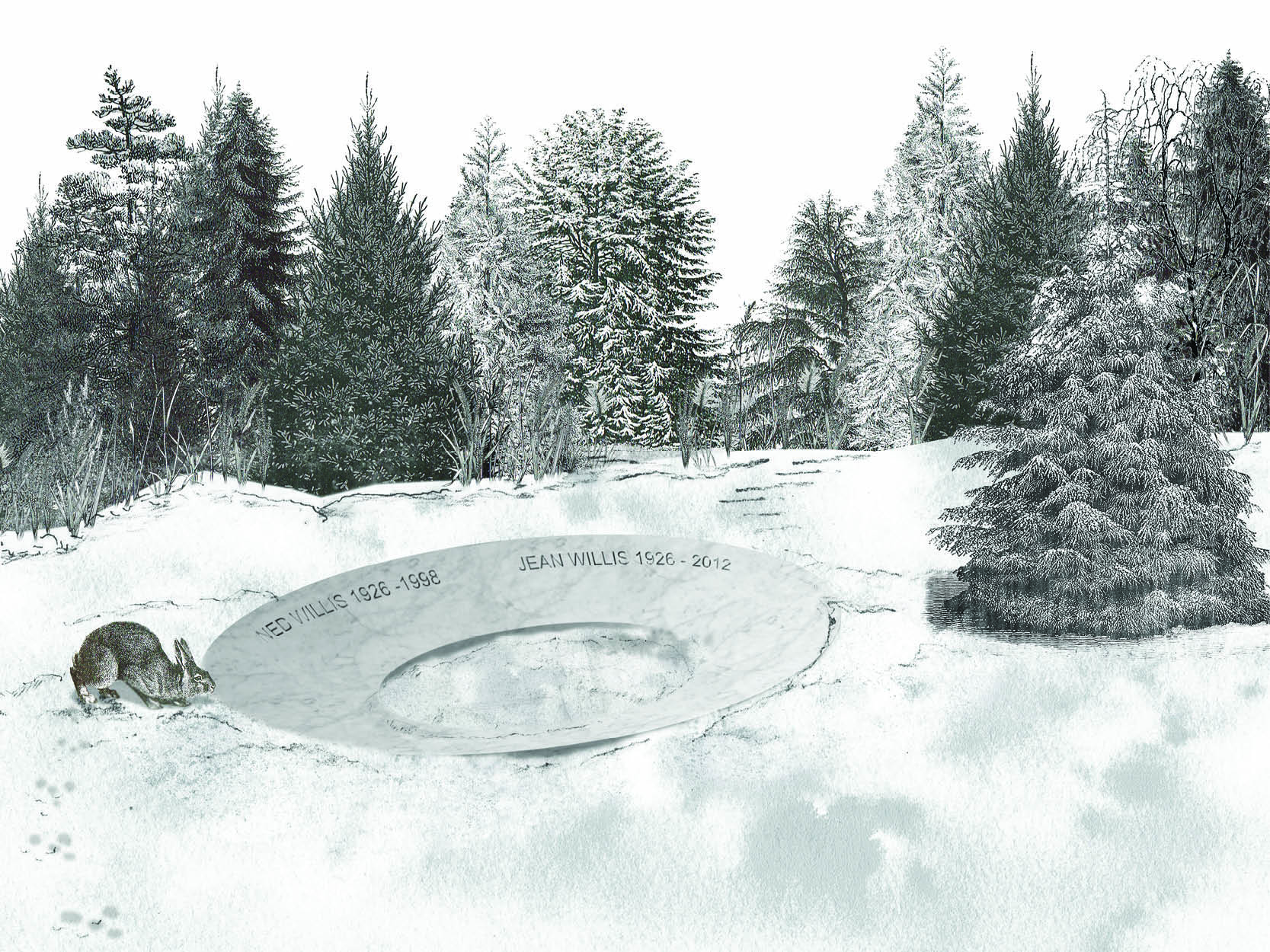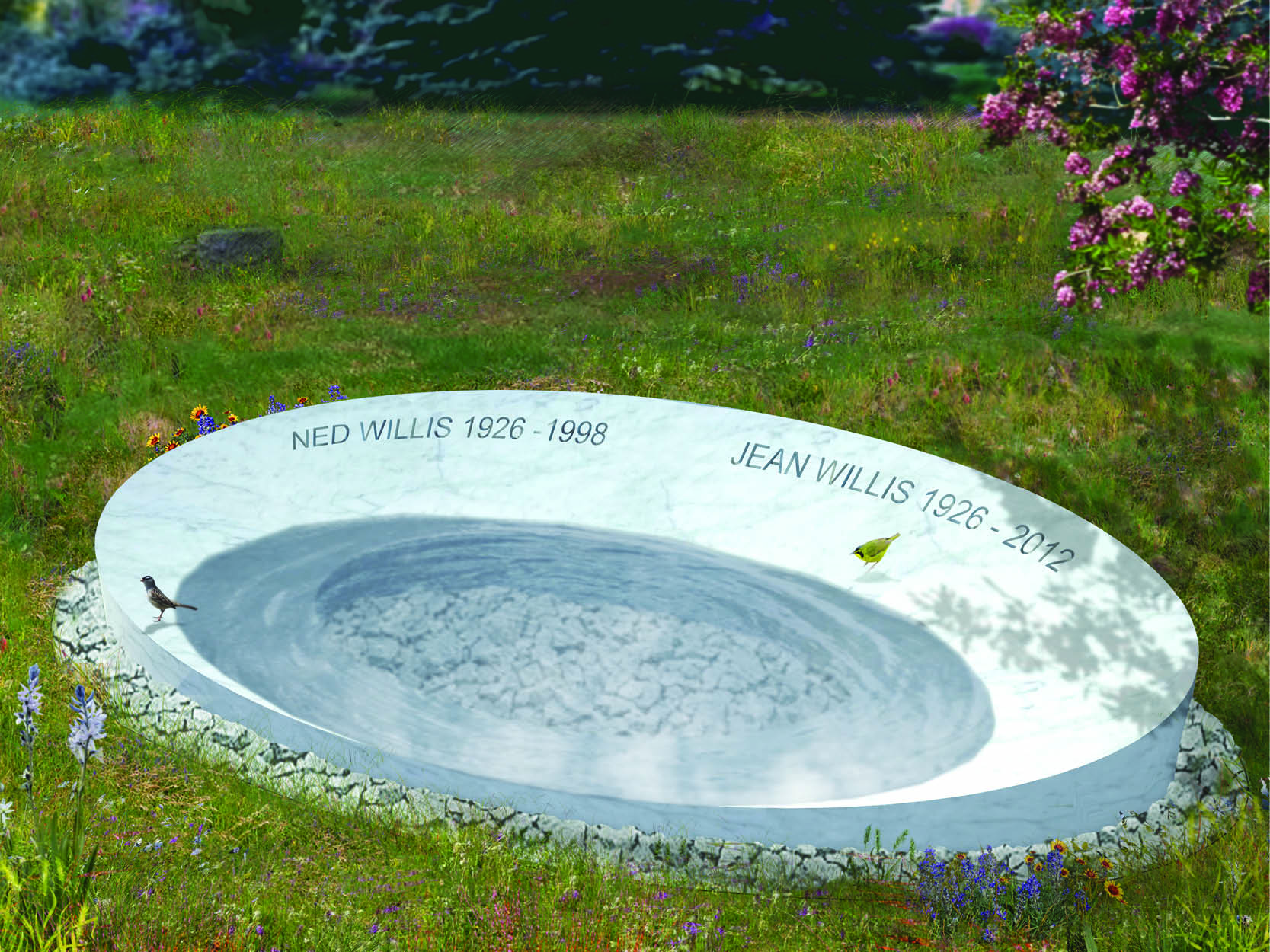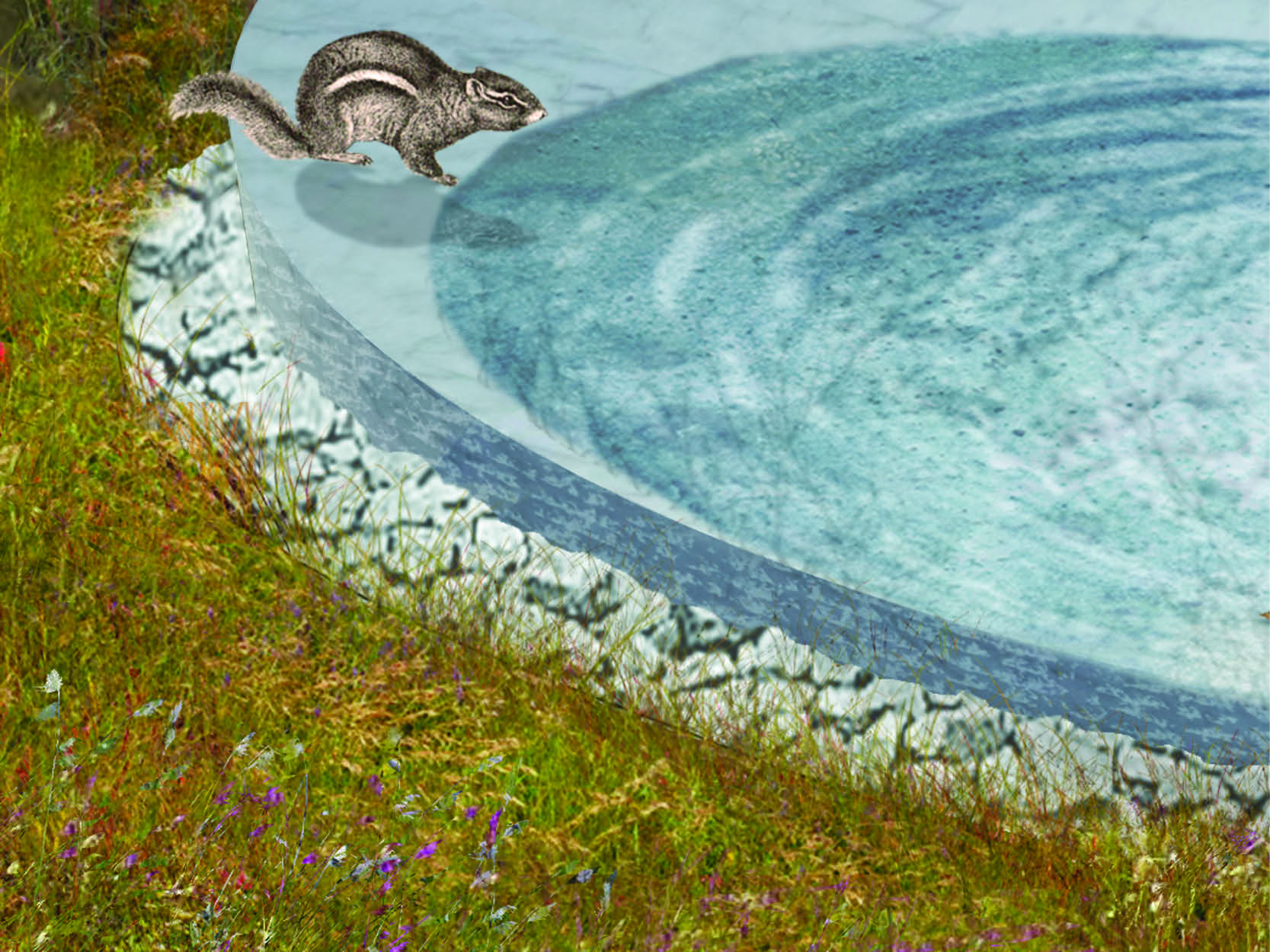Tombstones are used to commemorate the deceased loved ones and act as a marking for a place to respect and worship. However, because of its inanimate quality, tombstones have a short life in use or function other than graphically representing the date and name of those that have passed away. Cemeteries are overpopulated with forgotten mementos and do not have a cohesive planning to endure time.
To challenge the notion of the inanimate tombstone and its wasteful permanence, we must first give it life. By creating a tombstone in the shape of a vessel the tombstone will record, react, and reshape itself with the continuously changing natural context.
- Date: 2012-07-26
- Client: Private
- Program: Gravestone
- Team: OCX: Luke Willis, Esin Erez
- Location: Iowa, USA
- Status: Construction / Honorable Mention
- Link: Designboom


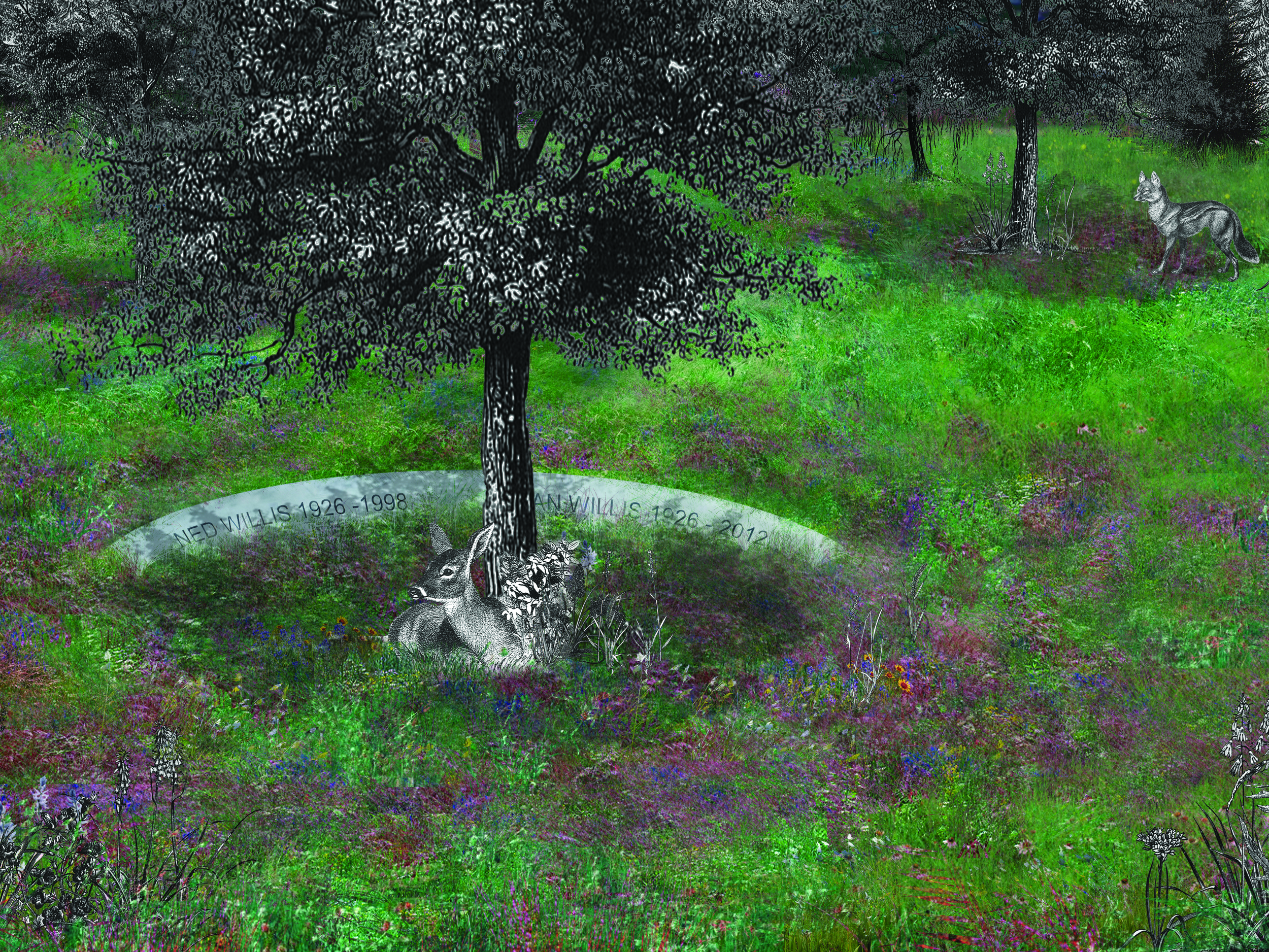

The stone that is quarried from the earth is first formed into a vessel by a series of elliptical cutouts. The remaining pieces are used as infill, and the stone is marked to record the deceased. The concave scoop acts as to continuously capture the time and nature of its context, acting as a basin when it rains, or as a planter to house a commemorative tree, until eventually it is immersed back into the landscape to become one with its context.

